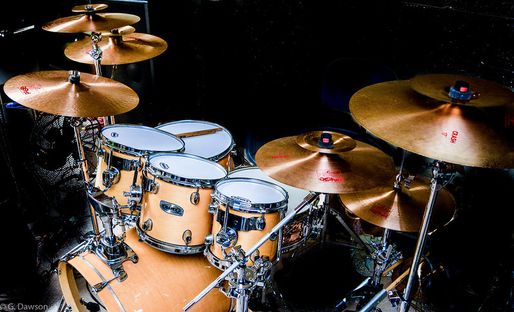-
About
Our Story
back- Our Mission
- Our Leadershio
- Accessibility
- Careers
- Diversity, Equity, Inclusion
- Learning Science
- Sustainability
Our Solutions
back
-
Community
Community
back- Newsroom
- Discussions
- Webinars on Demand
- Digital Community
- The Institute at Macmillan Learning
- English Community
- Psychology Community
- History Community
- Communication Community
- College Success Community
- Economics Community
- Institutional Solutions Community
- Nutrition Community
- Lab Solutions Community
- STEM Community
- Newsroom
Sound, Writing, and “Resonant Literacy”
- Subscribe to RSS Feed
- Mark as New
- Mark as Read
- Bookmark
- Subscribe
- Printer Friendly Page
- Report Inappropriate Content
If you haven’t read the December 2021 issue of CCC yet, be sure to check out the last piece in that issue: “Drumming a Literate Life: The Pursuit of ‘Resonant Literacy’” by Steve Lamos. Lamos, who describes himself as a “part-time drummer” and “full-time professor” of composition and rhetoric, tells readers how he came to these two professions when the rock band (American Football) he had been in reunited to celebrate the 15th anniversary of their original album, which had quietly gained quite a following:
Performing as a drummer (and occasional trumpeter) who also works as a professor has required me to cultivate, enact, and attempt to refine a range of embodied literate activities related to live musical performance. . . [and] to experience what I term here ‘resonant literacy’ . . . to combine and synthesize embodied literate work as a drummer with alphabetic journaling, reflection, and theorizing . . . [and] to engage in various sorts of emergent practices and identities operating at the nexus of the sonic and the alphabetic. . . . (314)
I was fascinated by Lamos’s narrative and by his discussion of resonant literacy, partially because my friendship with several writers and artists who are blind or severely vision impaired has taught me a great deal about their experience of sound and of the soundscapes they inhabit as well as about my own desire to focus more intently on soundscapes and to cultivate my own sense of resonant literacy. But also because the rise of spoken word and hip hop along with audio books and aural experiences of all kinds—not to mention years of teaching courses on graphic narratives that focused on the relationship of words, images, and sounds—have made me much more attuned to and interested in how sound and writing work together. (I’ve written before about Nicole Furlonge’s brilliant study Race Sounds: The Art of Listening in African American Literature, which explores the sonic dimension of African American literature and teaches us how we might learn to “listen in print.”)
Thinking back on my work with what is now the Stanford Center for Writing and Speaking, I vividly recall how much we focused on a very broad definition of “writing” as we sought to celebrate it—inviting students to perform their own work and to bring their musical instruments to play, and serving as the founding home of the Stanford Spoken Word Collective. So many of our activities in those early years in the Center brought sonic and alphabetic practices together—and today make me think of a different kind of “intersectionality” that looks carefully at the interconnections among media of expression.
And I’m thinking about how teachers of writing can create opportunities for students to experience and experiment with resonant literacy. Certainly, Lamos provides provocative examples in his discussion of “emergent intensity,” “enworlded practice,” and “hybrid identity,” three “intra-actions” that “resonat[e] together to create a new sort of lively and vivacious set of literate world-making activities” that characterize both literate processes and products.
My sense is that teachers of writing are already well along in thinking about such intra-actions and in embodying them in activities in and beyond their classrooms. I hope to learn about such practices in the coming months and to write more about them. In the meantime, I am imagining a new image of communication that will go way beyond the rhetorical triangle to include the increasingly important visual and aural/sonic aspects of literacy.
Image Credit: "Drum Set" by grantdaws, used under a CC BY-NC-ND 2.0 license
You must be a registered user to add a comment. If you've already registered, sign in. Otherwise, register and sign in.







